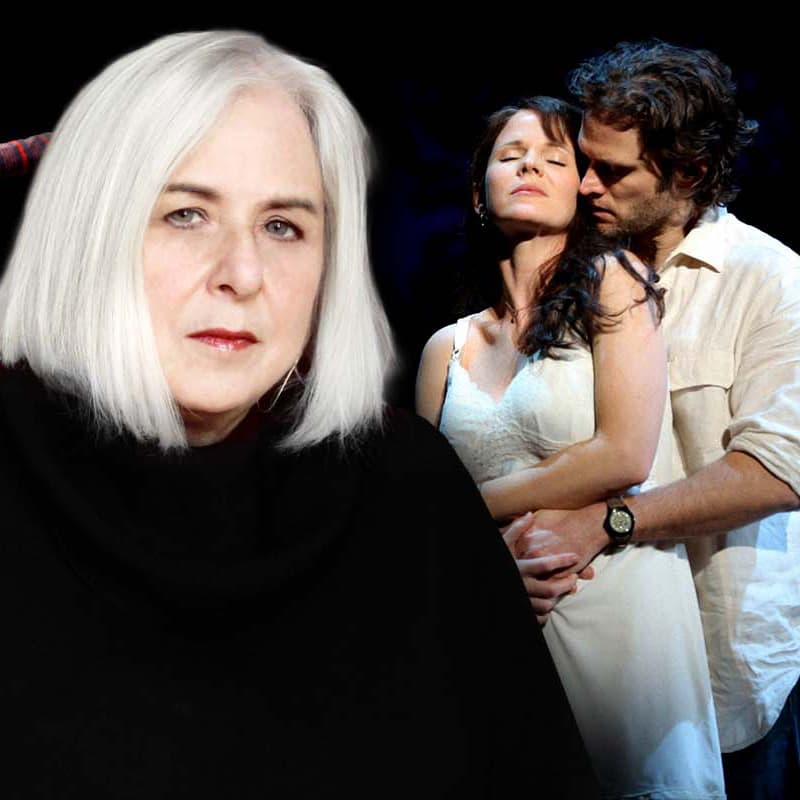Joan Marcus on Photographing Productions

Photo of Joan Marcus by Sofia Colvin
All other photos courtesy of Joan Marcus
January 11th, 2017
If you’ve ever looked at the production photos for a Broadway or Off-Broadway show, you may have noticed that the vast majority of the photos were taken by Joan Marcus, who, according to her website, has photographed over 500 productions. She received a 2014 Tony Honors for Excellence in Theatre, an award for people who have made a substantial contribution to the field but are not eligible for any traditional categories. Here, Joan shares some stories behind a few of her production photographs and a little about her process.
What’s your process when you shoot a show?
Sometimes I go see it first. You can only prepare so much. Essentially, you just go and you take pictures. Sometimes I see a rehearsal, sometimes I don’t. Sometimes I just shoot the show. I shoot a dress rehearsal, usually. Or sometimes for setups. It’s a combination of things.
How much input does the director have on the images?
Some directors want input. Some don’t care. Some leave it up to the marketing people. Each show is different.
How hard is it when you’re shooting a show where you haven’t seen it beforehand?
It’s not hard. I mean, you kind of go with the flow. It’s kind of like journalism, you just kind of go with it. I mean, sometimes it’s very helpful to see the show. Sometimes you see the show, and you think it’s helpful, and it’s not. It’s a very fluid kind of process.
It seems like a major responsibility in terms of deciding what images are put out there for the world.
But that isn’t my choice. That’s a choice of the publicist or the marketing people, or the director, or the producers. And then, who’s got approval and who doesn’t have approval. It varies from person to person and show to show. Sometimes what goes out there isn’t really a true representation of what the show is, and sometimes it is. I mean, it just depends on what the show is. Each case is actually very separate.
Do you shoot rapidly, then?
You shoot a lot. You shoot a lot because you have a lot of things that come into play. You have your lighting, you have catching people in the wrong moment. It’s like shooting live, without any sensors, you have to shoot so that you cover yourself.
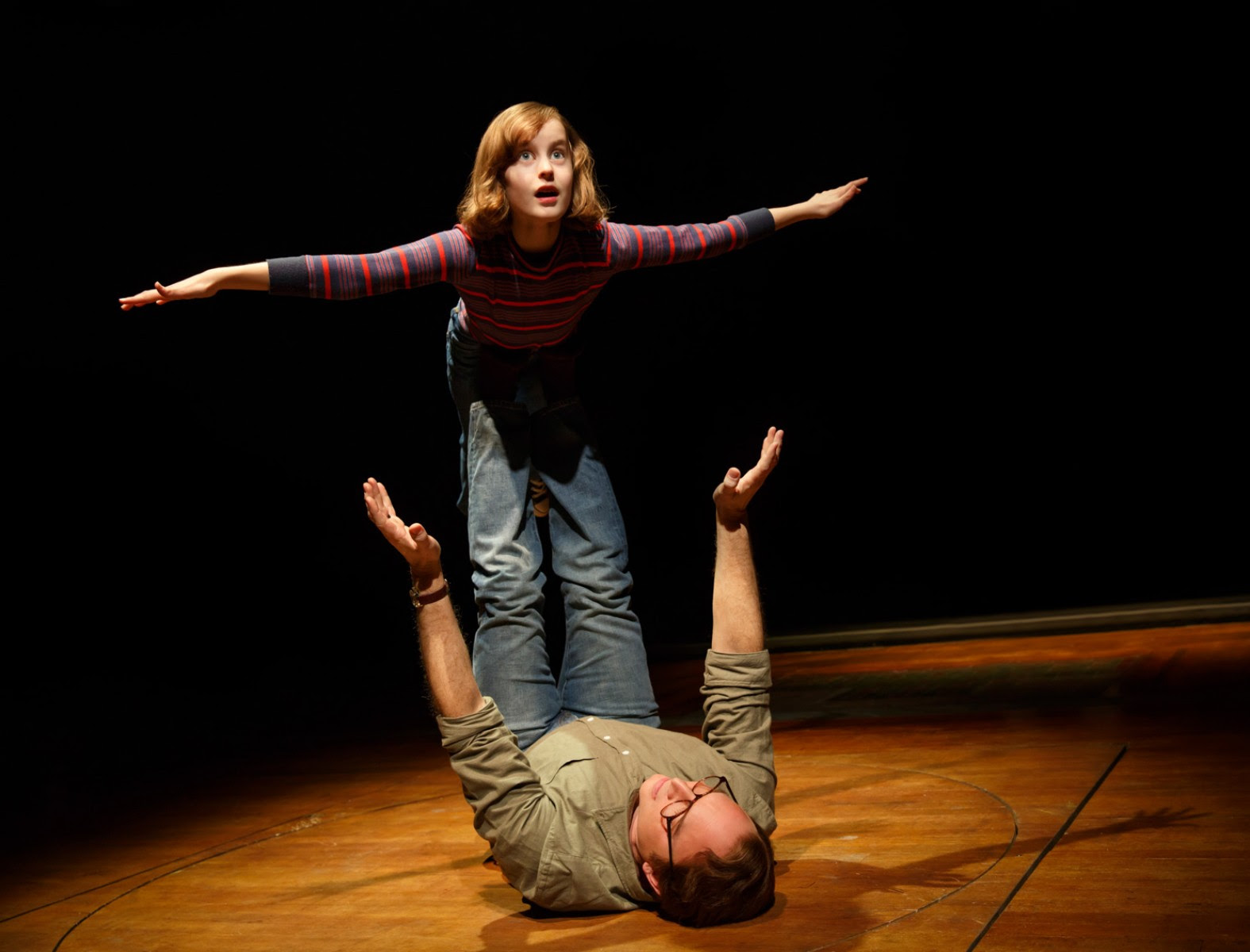
Fun Home
That was a setup. It exists in the show. The problem with it was the show was in the round, and where they allowed us to take the pictures on that, you couldn’t get to it [so]we set it up. Then, most of what was used for Fun Home was done in a run through. It was a dress rehearsal. Some directors don’t like to do setups, so with Fun Home the only ones we did were they wanted a family photo, so we got that from setups. Then the three Alisons were never really close enough together [during the actual show] to make a picture so we setup that, and the airplane [moment], which was an important picture.
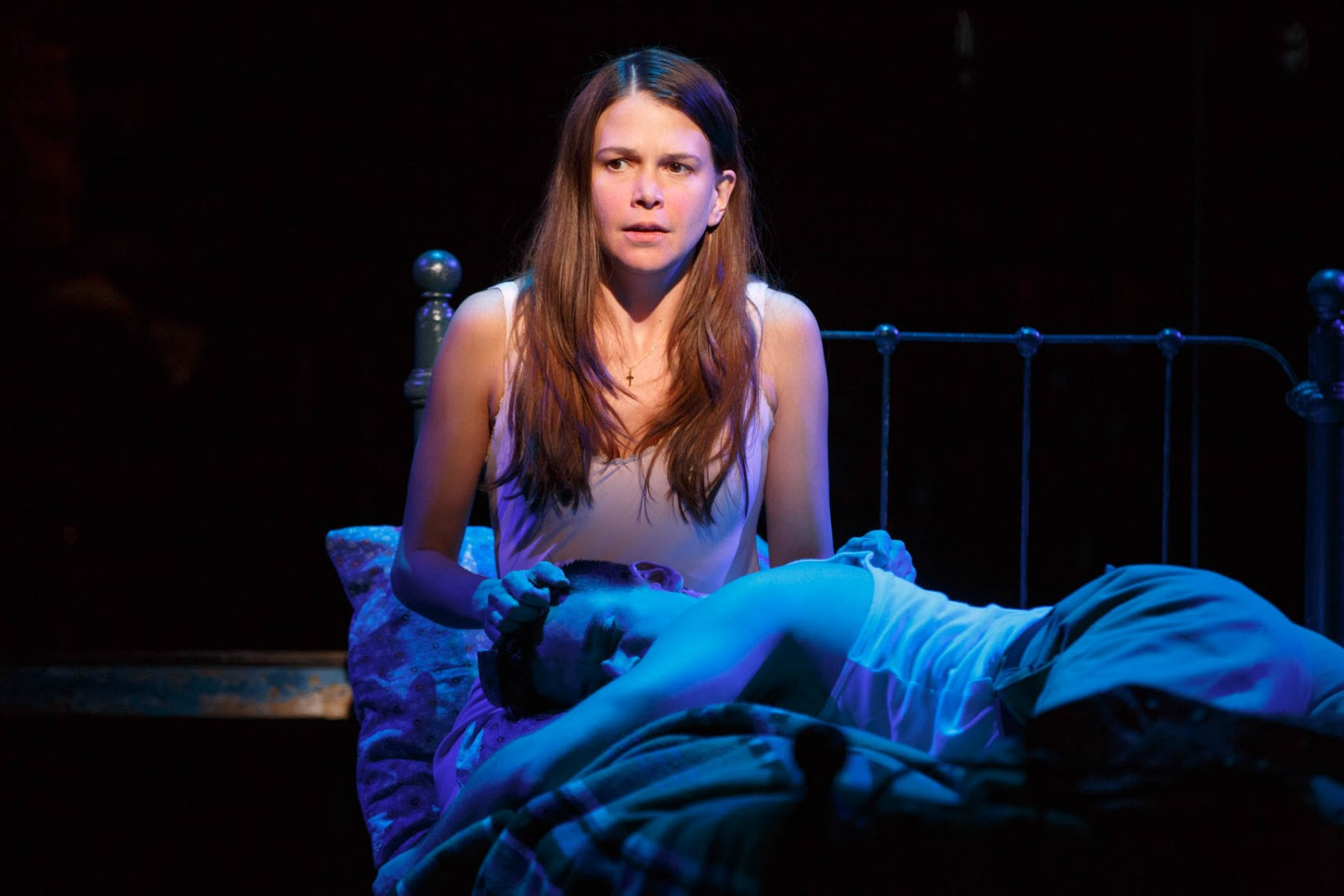
Violet
That’s during the show. Violet was all during the show. That’s how I like to shoot mostly; I think you get the best, most honest pictures that way. I knew Violet. I photographed the original production of Violet at Playwrights Horizons. I knew the story. I loved the story. I’d photographed [the revival] at Encores. Sometimes where you can shoot from and how a set sits in the house has something to do with how you figure things out. Because there’s tech tables, there’s the audience. You can’t talk to anybody. It’s jockeying for positions so that it lines up pleasantly, so that people aren’t obscured, and then it works visually. The whole thing is a limit. Sometimes you don’t have a choice [about angles] because you get one shot at it, like with Violet. You can’t take too many chances because you’ve got to get your basics. After you’ve covered your basics, then you can start moving around and changing your point of view and things like that.
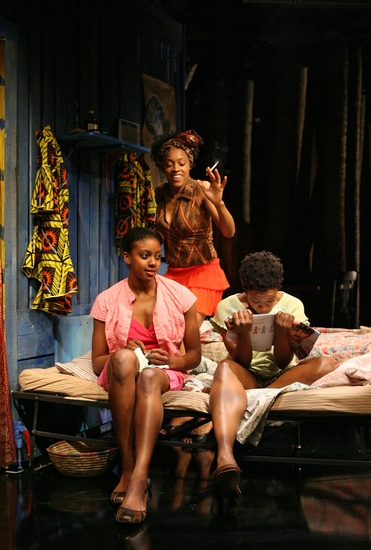
Ruined
I did this play called Ruined [by Lynn Nottage]. It’s about abuse of women and rape. It’s a brutal play. It’s a very brutal play. Manhattan Theatre Club, when they did it, they didn’t want to show the brutality of it. The New York Times’ picture was a woman strangling a guy with a machete; it’s a very brutal picture. The pictures of mine that they released were the pictures of the girls in their room helping each other put on makeup and dancing. They did put on the makeup. They did dance around their room. Then they were also raped in the bar. If [that’s] what the play is about, how do you want to present it? Manhattan Theatre Club obviously didn’t want to show the brutality. They showed it as like a sisterhood kind of thing.

The Bridges of Madison County
With The Bridges of Madison County, they had real problems with their advertising at first. People didn’t like the advertising. They found it laughable, so they were looking for a picture to sell the show. This was what they chose instead of the one that they had [first], which was more wholesome.
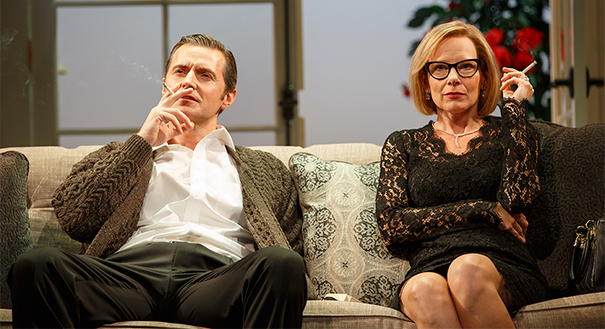
Love Love Love
There are certain shows where the production pictures don’t do them any justice. You take it out of context and you go, what is this? They try to use them for advertising. Production pictures aren’t always the best tool. Sometimes they’re evocative, sometimes they’re not. Sometimes you have a great play and that’s four people sitting around on a sofa. What is that? It’s four people sitting around on a sofa. Love Love Love was actually a little better than most. It was three scenes. He [Michael Mayer, director] tried to create angles to make it more [visually] interesting rather than have it straight on. This is what the show looks like. It’s quite elegant, but it doesn’t give you a lot of options. This set didn’t give you a lot of options. That poses challenges to make it so that it’s not all the same picture of people sitting. How do you create variety?
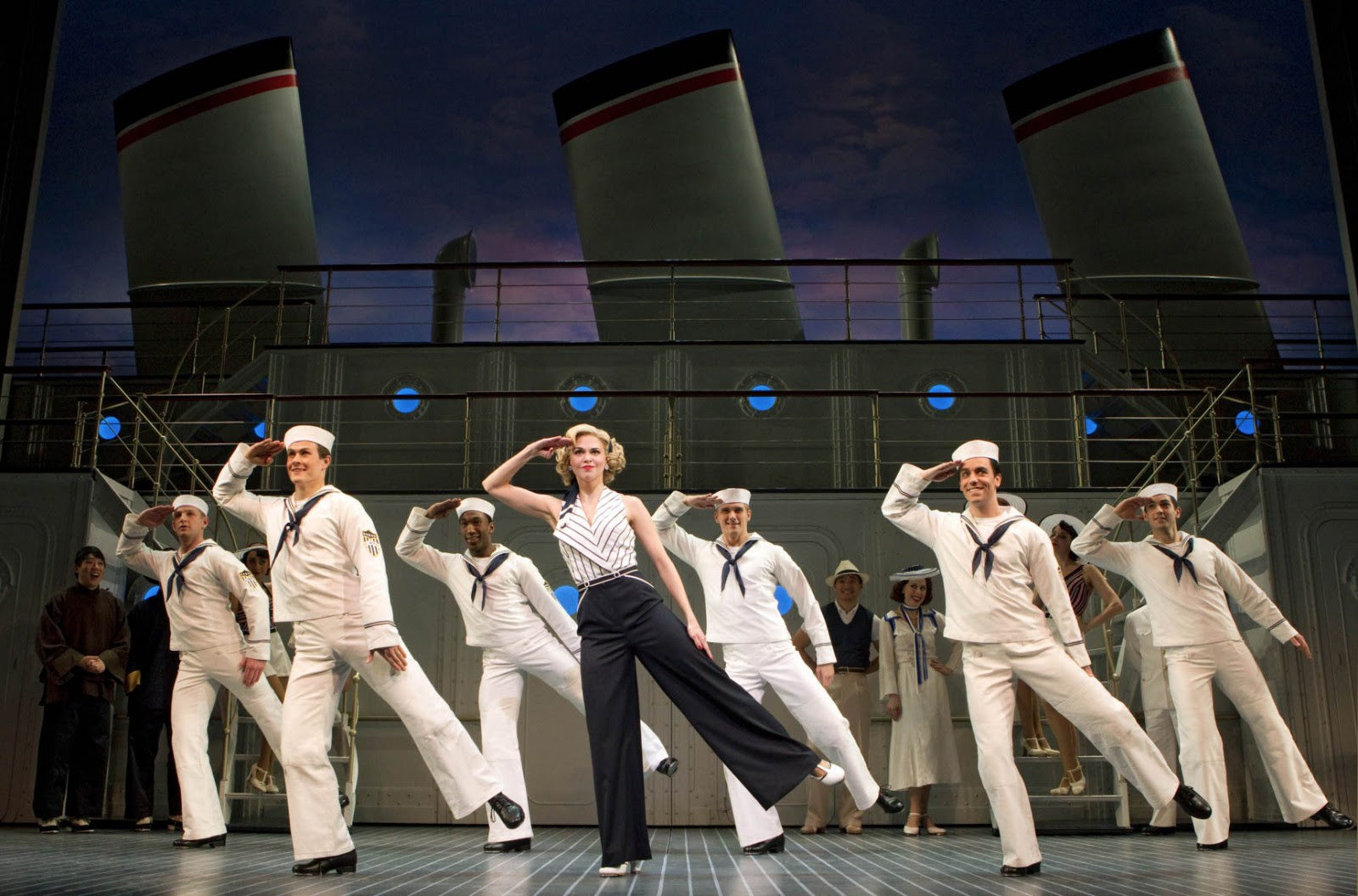
Anything Goes
There’s a couple challenges [with large ensemble numbers]. You don’t want it to be flat. You want to give it depth, but you’re only as good as the dancers. What maybe to the audience looks like everybody’s kicking all at once, they’re not. That reads in a photo. This is during the show. They’re not all together. It works in this, I think. You also have different body types. People have different reaches. You don’t see that one person lifted his leg higher than another. You don’t see that when you’re watching it, but the camera does see it. This is pretty together. Sometimes it’s really not together.
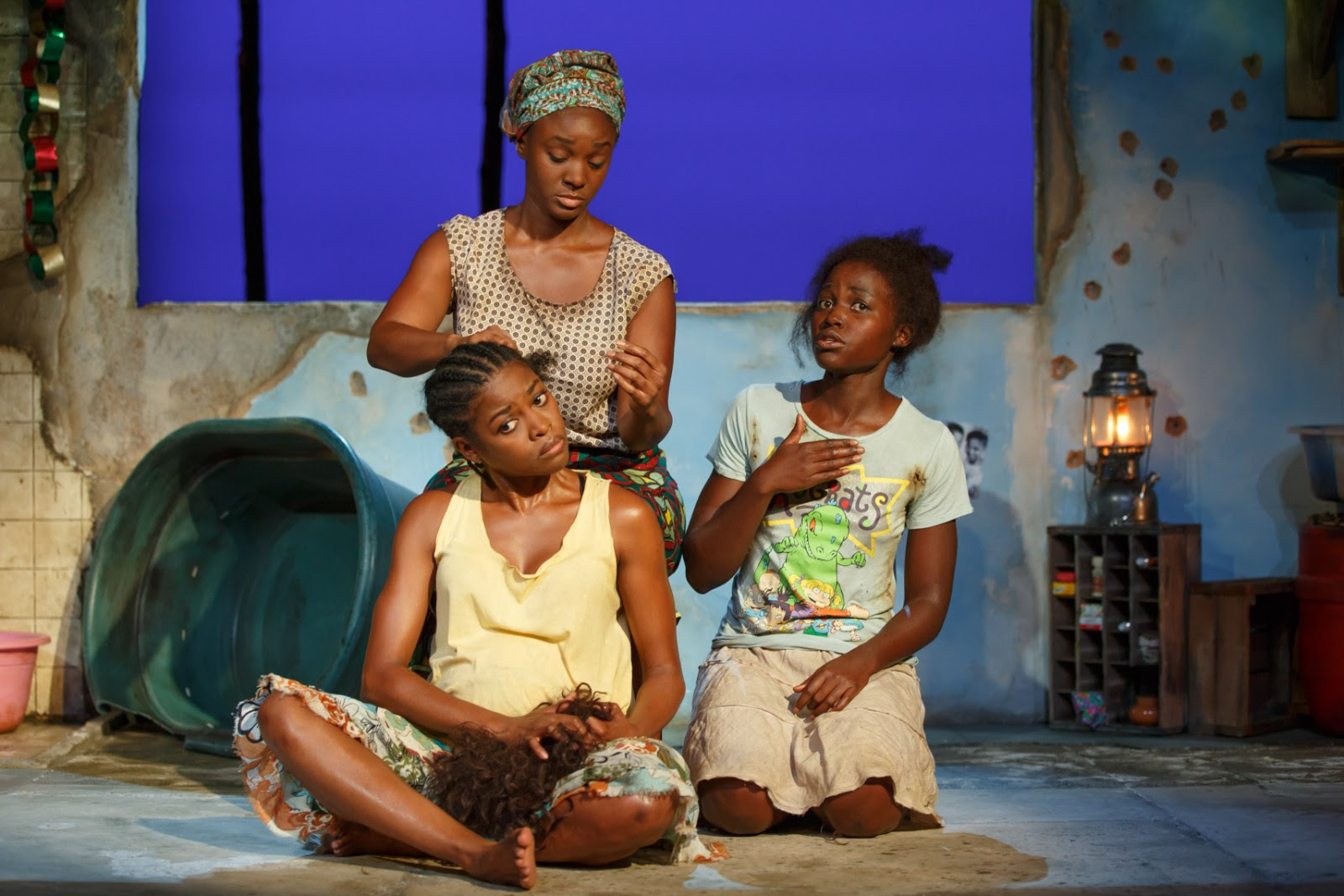
Eclipsed
I saw Eclipsed at the Public. It was about the same set on Broadway. The set does open up, but it opens up when it gets brutal and [one character] turns. They didn’t want to show that. The pictures are mostly of the women, the three women, in that little room. That was it. At the Public, it was easier to shoot because you could get an angle. On Broadway, we ended up shooting that from the back of the house while there was an actual performance, and then that really limits you too. I actually got some very nice pictures from the back of the house. Sometimes you do. The truth is, it should be a combination of having a bunch of shoots. Shooting from the side, shooting from the back. Because each place has advantages. Some give you height, somegive you a flatness that you may want with the lens, some give you an angle. You’ll get something no matter where you shoot from. Giving you the opportunity to do it from many different ways is actually a really good thing. Because you will get images no matter where you shoot.

